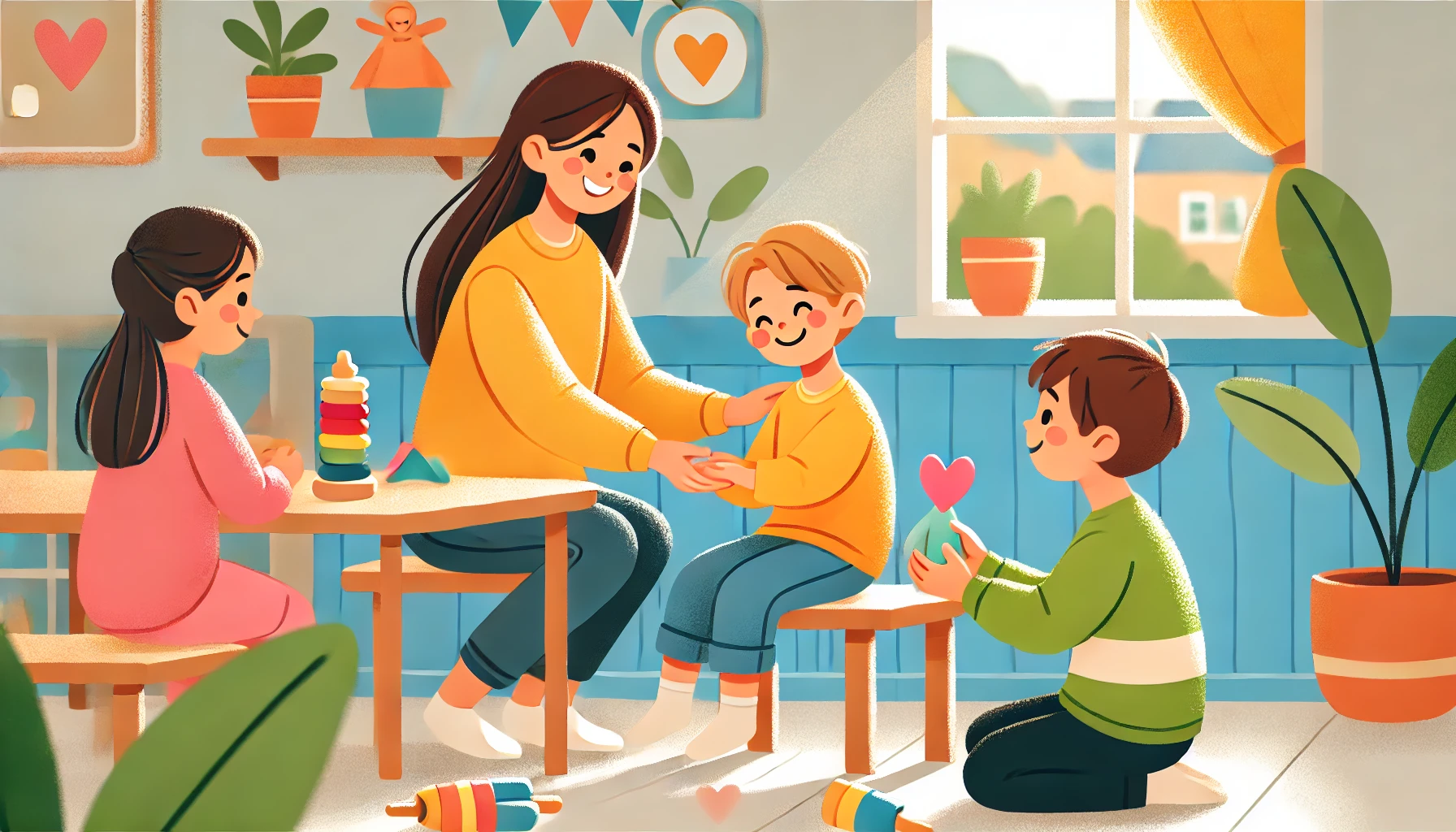How to Teach Young Children About Helping Others and Being Kind
Teaching young children about kindness and helping others encourages empathy, generosity, and strong social connections. When kids learn the value of small acts of kindness, they become more compassionate and thoughtful. Parents can nurture kindness through role-modeling, storytelling, and engaging activities. In this article, we’ll explore practical ways to help children understand and practice kindness.
Why Teaching Kindness is Important
- Encourages empathy – Helps children recognize and care about others’ feelings.
- Builds positive relationships – Strengthens friendships and family bonds.
- Teaches responsibility – Encourages kids to help and contribute to their communities.
- Promotes happiness – Studies show that helping others boosts personal well-being.
- Creates a more inclusive world – Kind children grow into respectful and compassionate adults.
1. Model Kindness in Everyday Life
Children learn kindness by observing how adults treat others.
Activity Idea:
- Say “Thank you” and “Please” often to show appreciation.
- Help a neighbor and explain to your child why it’s important to offer support.
- Demonstrate kind gestures like holding the door open or giving a compliment.
What Kids Learn:
- That kindness is part of everyday interactions.
- How small actions can make others happy.
- The importance of treating others with respect and care.
2. Encourage Small Acts of Kindness
Teaching kids that even little actions make a big difference builds a habit of kindness.
Activity Idea:
- Make a “Kindness Jar”, where kids pick a small act of kindness to do each day (e.g., share a toy, say something nice).
- Praise kindness: “That was really thoughtful of you to help your friend!”
- Encourage kids to smile at someone who looks sad or lonely.
What Kids Learn:
- That kindness doesn’t have to be big to be meaningful.
- How their actions can brighten someone’s day.
- The importance of thinking about others’ feelings.
3. Teach Kids to Use Kind Words
Helping children understand the power of their words promotes positive communication.
Activity Idea:
- Play a “Words That Make Us Feel Good” game, where kids list positive words and phrases.
- Teach “Think before you speak” by asking, “Would this make someone happy or sad?”
- Role-play how to respond kindly in different situations (e.g., when a friend makes a mistake).
What Kids Learn:
- That words can lift others up or bring them down.
- How to speak with kindness and encouragement.
- The importance of thoughtful communication.
4. Read Books About Kindness and Helping Others
Stories help children see kindness in action and understand its impact.
Activity Idea:
- Read Have You Filled a Bucket Today? by Carol McCloud (teaches how kindness spreads).
- Discuss: “How did the characters show kindness? How did it make them feel?”
- Encourage kids to act out kindness scenes from books.
What Kids Learn:
- That being kind creates a positive ripple effect.
- How small acts of kindness can change someone’s day.
- The connection between kindness and happiness.
5. Encourage Helping at Home and in the Community
Giving children opportunities to help fosters responsibility and compassion.
Activity Idea:
- Let kids help with simple chores, like setting the table or feeding a pet.
- Donate toys or clothes together and talk about why sharing is important.
- Volunteer as a family, such as cleaning up a park or helping at a shelter.
What Kids Learn:
- That helping others is rewarding and fulfilling.
- How teamwork makes tasks easier.
- The importance of contributing to their community.
6. Teach Kids to Recognize When Someone Needs Help
Helping kids understand when to offer help builds awareness and empathy.
Activity Idea:
- Role-play situations: “What would you do if a friend dropped their books?”
- Teach kids to ask, “Do you need help?” instead of assuming.
- Praise children when they notice and help someone without being asked.
What Kids Learn:
- That paying attention to others’ needs is important.
- How to offer help in a respectful way.
- The impact of thoughtful, caring actions.
7. Reinforce the Joy of Giving and Helping
Showing children how helping others makes them feel good encourages them to keep doing it.
Activity Idea:
- Ask, “How did it feel to help your friend today?”
- Make a “Kindness Tree”, where kids add a leaf for every act of kindness.
- Celebrate kind behavior with a hug or a simple “I’m so proud of you!”
What Kids Learn:
- That kindness benefits both the giver and the receiver.
- How being kind makes the world a better place.
- The motivation to continue helping others.
8. Be Patient and Consistent in Teaching Kindness
Kindness is a habit that grows over time, so continuous guidance and encouragement are key.
Activity Idea:
- Gently correct unkind behavior and suggest a kinder approach.
- Remind children that everyone makes mistakes but can choose to be kind next time.
- Celebrate kindness daily and make it a natural part of family conversations.
What Kids Learn:
- That learning kindness is an ongoing process.
- How to handle situations with kindness, even when frustrated.
- The importance of making kindness a lifelong habit.
Final Thoughts
Teaching young children about helping others and being kind fosters empathy, responsibility, and happiness. By modeling kindness, encouraging small acts of generosity, and reinforcing positive behavior, parents can guide children toward becoming compassionate and caring individuals who make the world a better place.
